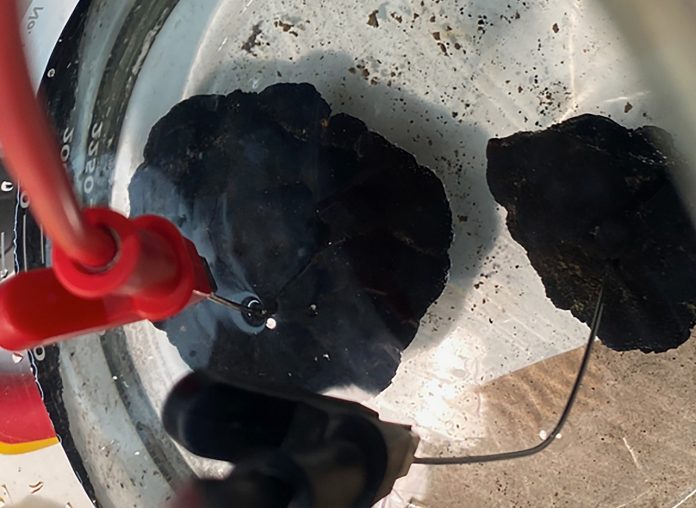
A groundbreaking discovery by an international team of researchers, including a chemist from Northwestern University, has found that metallic minerals on the deep-ocean floor can produce oxygen 13,000 feet below the surface.
This surprising finding challenges the long-held belief that only photosynthetic organisms like plants and algae generate Earth’s oxygen.
The research shows that oxygen can also be produced in the deep sea, where no light can reach, supporting oxygen-breathing sea life in complete darkness.
The study, titled “Evidence of dark oxygen production at the abysmal seafloor,” was published in the journal Nature Geoscience.
Andrew Sweetman, from the Scottish Association for Marine Science (SAMS), discovered this “dark oxygen” while conducting fieldwork in the Pacific Ocean. Franz Geiger from Northwestern University led the electrochemistry experiments that help explain this discovery.
“For aerobic life to begin on Earth, there had to be oxygen, and we always thought it came from photosynthetic organisms,” said Sweetman, who heads the Seafloor Ecology and Biogeochemistry research group at SAMS.
“Now, we know oxygen is also produced in the deep sea, where there is no light. This makes us rethink questions like: Where could aerobic life have started?”
The discovery centers on polymetallic nodules, which are natural mineral deposits on the ocean floor. These nodules, made of metals like cobalt, nickel, copper, lithium, and manganese, vary in size from tiny particles to as large as a potato.
“These polymetallic nodules that produce oxygen contain metals critical for batteries,” said Geiger, a co-author of the study. “Many large-scale mining companies want to extract these elements from the seafloor, 10,000 to 20,000 feet below the surface. We need to reconsider how we mine these materials to avoid depleting the oxygen source for deep-sea life.”
Geiger is a professor of chemistry at Northwestern’s Weinberg College of Arts and Sciences and a member of the International Institute for Nanotechnology and the Paula M. Trienens Institute for Energy and Sustainability.
Sweetman made the discovery while sampling the seabed of the Clarion-Clipperton Zone, a mountainous ridge along the seafloor that stretches nearly 4,500 miles in the northeast Pacific Ocean. Initially, when his team detected oxygen, they thought their equipment was faulty.
“When we first got this data, we thought the sensors were broken because every previous study showed oxygen being consumed, not produced,” Sweetman said. “We recalibrated the sensors, but for 10 years, these strange oxygen readings kept appearing. When we used a different backup method that confirmed the results, we knew we had found something groundbreaking.”
In the summer of 2023, Sweetman contacted Geiger to discuss possible explanations for the oxygen source. Geiger had previously found that rust, combined with saltwater, can generate electricity. They wondered if the deep-ocean’s polymetallic nodules could generate enough electricity to produce oxygen. This process, called seawater electrolysis, pulls electrons out of water’s oxygen atom.
To test this, Sweetman sent several pounds of the polymetallic nodules to Geiger’s lab at Northwestern. Sweetman also visited the lab in December. They found that just 1.5 volts, the same as a typical AA battery, can split seawater. The team recorded voltages up to 0.95 volts on a single nodule’s surface, and when multiple nodules clustered together, the voltage was even higher, similar to batteries connected in series.
“We seem to have discovered a natural ‘geobattery,'” Geiger said. “These geobatteries could explain the ocean’s dark oxygen production.”
The researchers suggest that the mining industry should consider this discovery before starting deep-sea mining activities. According to Geiger, the polymetallic nodules in the Clarion-Clipperton Zone alone could meet the global demand for energy for decades. However, marine biologists found that areas mined in the 1980s had not even recovered bacterial life, while unmined areas flourished.
This indicates that deep-sea mining could have long-lasting negative impacts on ocean-floor ecosystems.
In conclusion, this discovery highlights the need for careful consideration of deep-sea mining practices to protect the unique and crucial environments on the ocean floor.



